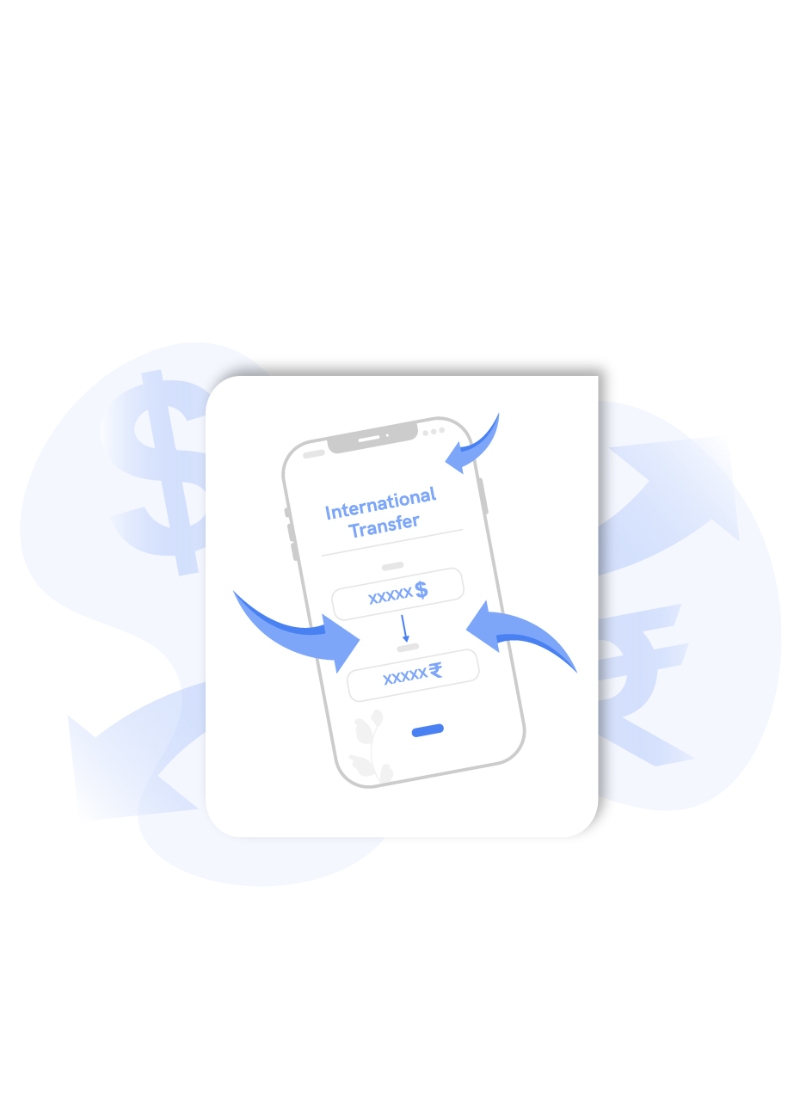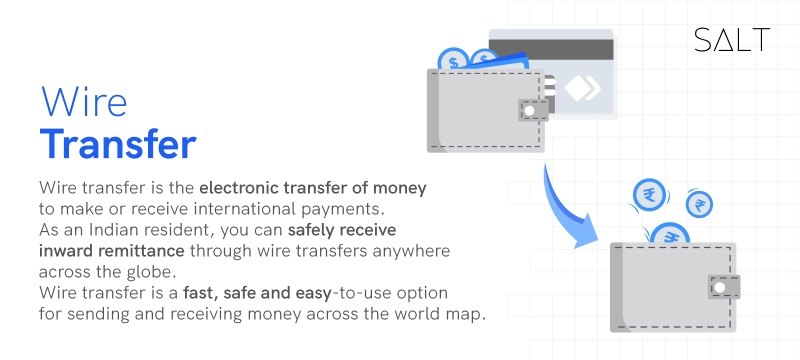
As the world becomes a global village, Indian businesses, especially SMEs, have made their presence felt in the world markets. A 2021 PIB report states, “With more than 63 million MSMEs spread across the geographical expanse of India, MSMEs have been contributing nearly 40% of overall India's exports, contributing to approx. 6.11% of the country's manufacturing GDP & 24.63% of the GDP from the services sector.”
India is also one of the largest receivers of inward remittance. Data from the World Bank shows India received a total of $87 billion inward remittances in 2021.
While bank transfers are common in domestic dealings, wire transfers are a quicker and cheaper way to receive international payments from abroad, whether it is SMEs, entrepreneurs, households, or individuals. A wire transfer can also be used for domestic, in-country transactions.
What is Wire Transfer?
Wire transfer is the electronic transfer of money to make or receive international payments. As an Indian resident, you can safely receive inward remittance through wire transfers anywhere across the globe.
Wire transfer is a fast, safe and easy-to-use option for sending and receiving money across the world map. Essentially, you need a bank account via which wire transfers can be made. If you receive international payments or funds for your startup or SME from clients, partners, or investors living abroad, you need to know the rules and formalities concerning a wire transfer. Let us look at some frequently asked questions regarding wire transfers to India.

Frequently Asked Questions:
1. How can I receive money in India through wire transfer?
The sender should instruct their local bank by filing a request form with the following details to initiate a wire transfer to India. The request form should contain the basic financial information about the recipient:
Recipient’s credentials like name, recipient’s address, mobile number, and zip code.
Recipient’s bank account number
Name and IFSC code of the bank where the money has to be transferred.
SWIFT Code of the recipient’s bank as well as the sender’s local bank.
Make sure to give the correct details to the sender for a successful wire transfer. The bank charges a small fee from the customer for using the wire transfer facility. You can visit your bank to see if the funds are cleared, or through a neobank like Salt, you can get the updates online without the discomfort of visiting the bank.
2. What are the charges for wire transfers?
Few banks may charge a commission on the receipt of the international transfer. While most only charge service tax on the conversion of foreign currency. Following the GST Bill 2017, Goods and Services Tax (GST) charged for the currency conversion on the taxable value is:
1% of the transfers up to INR 1 lakh,
0.5% plus INR 1000 on transfers above INR 1 lakh to INR 10 lakh, and
0.1% plus INR 5,500 on transfers above INR 10 lakh.
Banks may charge for demand draft as well as levy courier charges.
3. How long does receiving money via a wire transfer take?
The duration to receive international payments via wire transfer depends upon the nature of the transaction. If the transfer is domestic, it only takes a business day because no clearance of funds is required; you can only transfer as much as you have in the bank account. However, as in this case of receiving the money from abroad in India, it might take 4-7 business days to process the transfer.
4. In what currency the money is received?
The transfer made from the foreign country will be in the local currency of the country where the sender resides currently. However, once the transfer is received in your bank account in India, the bank will convert it into INR. Your bank will charge you for the conversion of the money, including GST.
5. How can you check your transaction's status with the reference number?
If you want to check the status of your transaction while receiving international payments or funds for yourself or your startup or SME, you can visit your bank with the following information:
Recipient’s name
Recipient’s account number
Amount to be received
Date of the transaction
And the reference number of the transaction.
6. What is the limit to receiving funds in India?
As per RBI guidelines, A cap of $ 2,500 has been placed on individual remittances under the scheme. In addition, thirty inward remittances can be received by a single beneficiary under the scheme during a calendar year. Under the RDA arrangement, There is no limit on the remittance amount and the number of remittances. However, there is an upper cap of Rs.15.00 lakh for trade-related transactions.
Besides these restrictions, there is no cap on the number of wire transfers one can receive in India.
7. What benefits do the NRI account holders receive from a wire transfer?
NRIs are not charged for intermediary services. To avail of the NRI benefits, they must give their details to the sender of the money abroad with the term ‘FCNR’ (Foreign Currency Non-Resident) or ‘NRI’ attached.
8. How can you retain the money in foreign currency?
If you have an INR account, then funds will be converted automatically once they are received in your bank account in India. If you hold a foreign currency account, you must provide your EEFC/RFC account number to the sender to retain the money in the foreign currency. NRIs should use ‘FNCR’ (Foreign Currency Non-Resident) with the SWIFT Code to retain the money in foreign currency.
However, Salt offers multicurrency accounts in which you can freely keep your inward remittance in foreign currency. And if you want to convert it into INR, you can do it at the lowest rate.
9. Which bank to choose for wire transfer?
Select a bank in which you have an active account for receiving the wire transfer. Wire transfers can be done through offline and online methods both. For the offline method, you need to visit the bank branch. While for the online approach, you can easily do it using your phone. Or you can avail of the services of Salt bank. Salt is India’s first virtual-only solution that provides a plethora of services to individuals and SMEs, including compliance and international banking at no hidden charges or markups.
Salt aims at helping startups and SMEs in international transactions by removing the complexities of cross-border transactions. It bridges the gap between internationally operating SMEs and banking services, providing a single go-to place to carry out all the banking functions.
Receiving international payments and funds for your SME or startup through wire transfer is simple. You just need to choose the right bank and submit the correct details.


